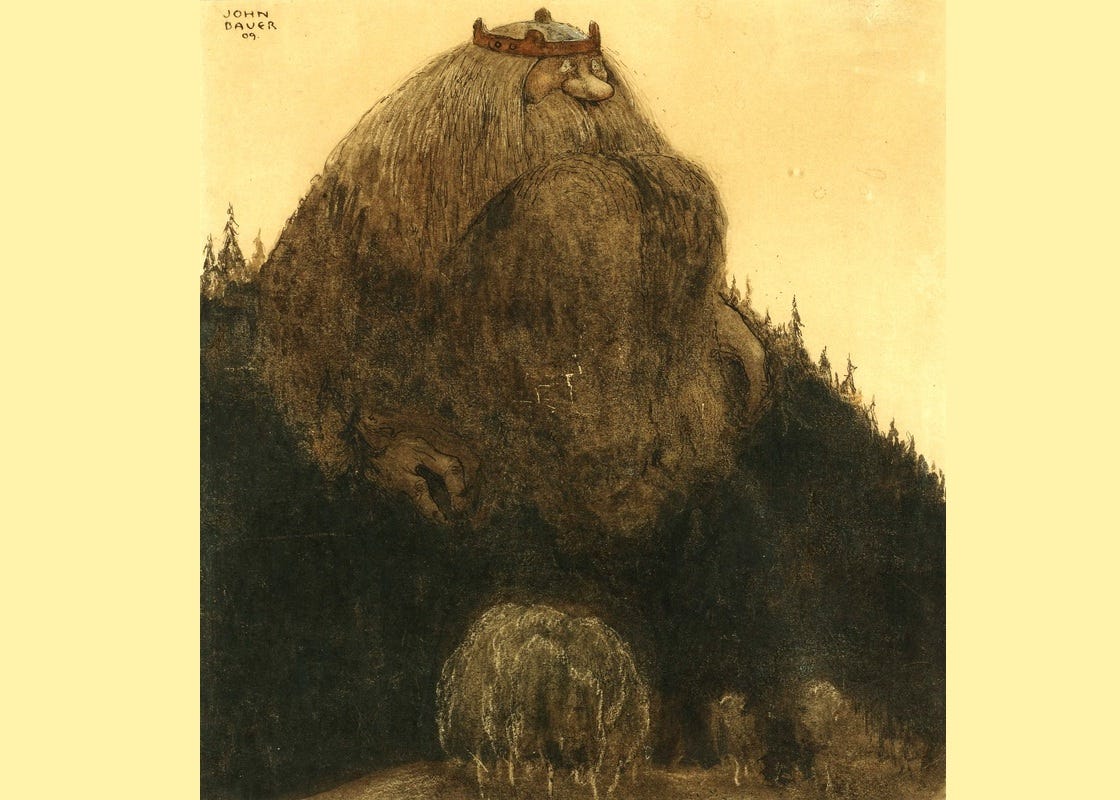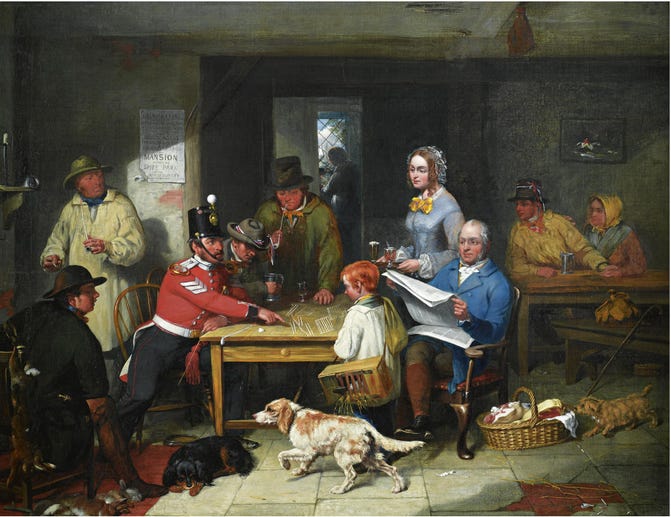Lumping And Splitting The Lore
What was that thing?
I have seen people wondering why every culture has a dragon.
Wonder no more.
It’s because every vaguely reptilian creature gets labeled a dragon.
Partly this is an element of translation: turning oni, rakshasa, and trolls into ogres may be defended as translating the term like the rest of the words in the original. Too many foreign terms, and the ability to memorize them all is swamped.
Still, it does lead to problems. Rakshasa may feature in fairy tales as ogre-like creatures, but they do tend to be the most powerful of all four. (Especially in tales outside of the fairy tale set.) Trolls are far more likely to be beneficent, or at least kindly, than ogres. Oni have weather powers and can be driven off by throwing beans.
(As a side note, because this is folklore, there can then be drift. The fenghuang was immortal. Simply immortal. Then it became the “Chinese phoenix.” Stories about how a phoenix grew old, made itself a nest of spices, and burned itself alive to regenerate its youth were apparently too cool to avoid picking it up. But this applies to your world-building only if your creatures are folklore, not for real. If they are for real, you can just pick the one you want.)
But even within a region with common folklore, there is the question of whether a pixie is the same being as a pisky, a pixy, a pixi, a pizkie, a piskie, or a pigsie. Is it just dialectal terms for the same being? Are there regional difference for some or all of them? If there are regional differences, are they large enough to draw a distinction?
The last question is where the distinction between lumpers and splitters arises. The terms are much more widespread, indicating all sorts of scientists who prefer to put more things in bigger and fewer groups, or fewer things in smaller and more groups.
Role-playing games go for splitting. Every difference in stats is, if not a different monster, a different subtype of the monster.
This is less likely in folklore, which can go either way from it.
Frequently, the being is not a type at all, but a unique and named being: the Cauld Lad of Hilton, Jennie Greentooth, or some other specific being.
But once you get past that, there can be specific names for specific types of beings, but they tend to be vague, and general, and very different. You could not draw up a stat block and manage to encompass it all.
I recommend going for lumping.
For one thing, it helps with the problem of making them all different. Perhaps this fae lives in households, and that one in the forest, and this other one lives in the marshes and tries to mislead travelers with its lights.
All right, that’s a little loose. Most cultures would distinguish between a pixie who confuses your path; a brownie who does household work, and must given milk but no clothes, to avoid insult; and a redcap who haunts old castles and will murder you to keep his cap red with blood.
But within such broad strokes you can lump. It may even be wise to have the terms be unrealistically uniform -- after all, having your characters have to wade through dialects is a pain whatever they talk about1 -- even as your characters ponder how the redcaps of the plains differ from those of the hills, and those from the ones of the seashore -- or, for that matter, among themselves -- because those differences are crucial.
Whether you do opt to use the terms broadly or narrowly, ensure that the characters know about that, sometimes even before they reach the region.
Remember how sheltered Bilbo Baggins knew how a dragon’s undersides are somewhat tender. In many RPGs, characters are blindsided by the traits of monsters they meet.
Realistically, they could know through tales what the monsters are like, and how they are vulnerable. That a redcap, regardless of region, needs to keep its cap red with fresh blood or die. That being pixy-led can be undone by turning an article of clothing inside out.
They could also know that you have to stop by the tavern and fish for stories to find the details of the local monsters. Possibly even if their knowledge was sufficient normally. This would apply regardless of the terms. They would know that either the Cauld Lad the peasants talk of is a unique being, and they should fish for knowledge, or that this region had redcaps, but that’s not to say that they have to be like redcaps in the lands they came from.
Finally, if neither of those worked, they would know that, and they would have at hand a lot of magic, or whatever other technique, devised to exactly test this monster, given the known variability. (RPGs have unrealistically few ways to glean the vulnerabilities of monsters, given how many oddball vulnerabilities the monsters have.)
Perhaps they even document these things, noting that the Cauld Lad was a ghost; that the redcaps of the shore can live off shore-birds as well as humans; and what are called pixies in the marsh are, in reality, not true pixies but will-o-wisps filled with malice. Depending on whether it is helpful to the story. Tracking down old lore is an old story technique.
Then the characters have to consider whether the writer was a lumper or a splitter.
Dialect Do's and Don'ts
Ah, dialects. The subtle variants in phrasing, pronunciation, and vocabulary, which can range from mild shades to “only a linguist would not say that this is a different language.”




As you get at with the lumping vs. splitting idea, this touches on a much bigger issue, which is that one of the ways human beings make sense of the world is by putting things in categories, and that those categories can sometimes have very arbitrary boundaries.
Re: mythology, you can have different levels of this simultaneously existing. In Greek mythology, for instance, Scylla is a unique creature whereas centaurs are members of a species with common characteristics.
I enjoy these so much, glad I randomly came across your substack :)